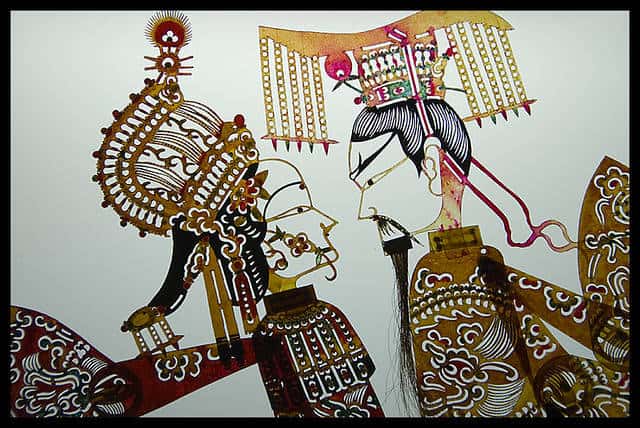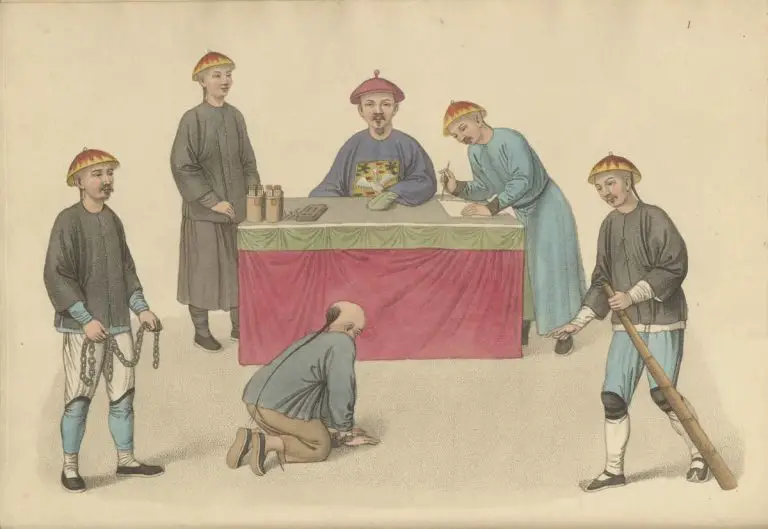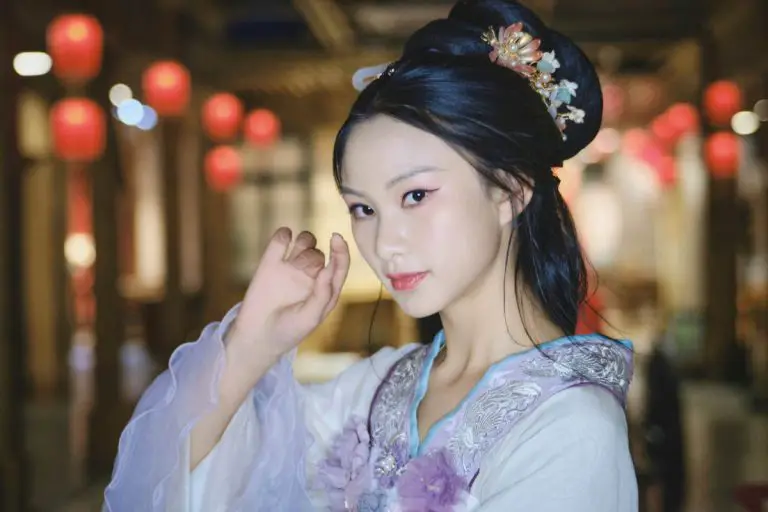Shadow puppetry is considered the oldest form of puppet theater in the world. The history of shadow theatre began thousands of years ago in China and over the centuries evolved into a theatrical form that combines storytelling and entertainment.
The stories of Chinese shadow puppetry come from legends, fairy tales, and well-known epic stories. But they are presented in a way that exaggerates and dramatizes the original story.
Chinese shadow puppetry combines culture, opera, fine arts, storytelling, history, and music.
These are some facts about the Chinese shadow puppetry that everyone should know.
- The origin of shadow puppets seems to be at 121 BC in Changan of China during the ruling of Emperor Wu (r.141-87 BCE) of the Han Dynasty.
- According to the legend, when the favorite concubine of Emperor Wu, Lady Li, died he demanded a shaman to brings her back. The shaman made Lady Li’s shape using donkey leather and brought her back to the emperor in the form of a shadow, which appeared behind curtains.
- During the play, puppets are controlled with thin sticks similar to chopsticks.
- A shadow puppet play often represents Chinese legends, battles, mythological creatures, and stories of classical novels.
- The first shadow theater screens were made of mulberry paper.
- Traditionally, Chinese shadow puppets are made from animal skins that are processed and scraped to be very thin and translucent.
- For this reason, the Chinese name for puppetry is “pi ying xi”, which is literally meant as “leather shadow play.”
- The size of shadow puppets varies from some 20 cm to one meter.
- It requires as many as 24 procedures and more than 3,000 cuts to produce a single figure.
- Heroes always have long narrow eyes, and a small mouth and a straight bridge of the nose. While villains are quite the opposite, with small eyes, a big forehead, and sagging mouth.
- Like the masks in Beijing Opera, there’s also a color code for the shadow figures. A red mask represents royalty and bravery, a black mask, uprightness, and a white one, treachery.
- The normal shadow figurehead is a full profile, known as “half-face”. For the clown and the villain they sometimes use half profiles, called “70% face”. Fairies and Buddha appear with a full face. The figure’s body is mostly 70%.
- Shadow puppetry was introduced in the West around the thirteenth century and still retains its original character.
- Chinese shadow puppetry was developed in the United States in the 1930s by Pauline Benton who founded Red Gate Players and who trained students until the 1970s creating an American legacy of Chinese shadow puppetry.
- In 2006, the Chinese government included Chinese shadow puppetry into the country’s first National Intangible Cultural Heritage List.
- Chinese shadow puppetry inscribed in 2011 on the Representative List of the Intangible Cultural Heritage of Humanity by UNESCO.
Check out our “Free Culture Library“. We have compiled some great free resources, about Chinese culture, for your research.
Take a look at these awesome Shadow Puppets.– Aff.link
Watch below 5 Shadow puppetry stories.
The Secret of Liu Tai the Vase Maker
Chinese Legend of Mid-Autumn Moon Festival
The story The 5 Chinese Brothers
Mouse and Cat
Smart Monkeys
Take a look at these awesome Shadow Puppets.– Aff.link
An Introduction to Chinese History & Culture (Aff.link)
Dive into China’s rich past and intriguing present! From ancient dynasties to modern powerhouses, uncover Chinese culture facts, pivotal moments, and the captivating tales that have shaped this vast nation.
Stay in Touch
 Join our newsletter by using the forms on this website or click here!
Join our newsletter by using the forms on this website or click here! Follow us on Google News
Follow us on Google News Follow us on Facebook
Follow us on Facebook
Featured image: “Chinese Shadow Puppets” by Ernie R is licensed under CC BY-NC-ND 2.0






